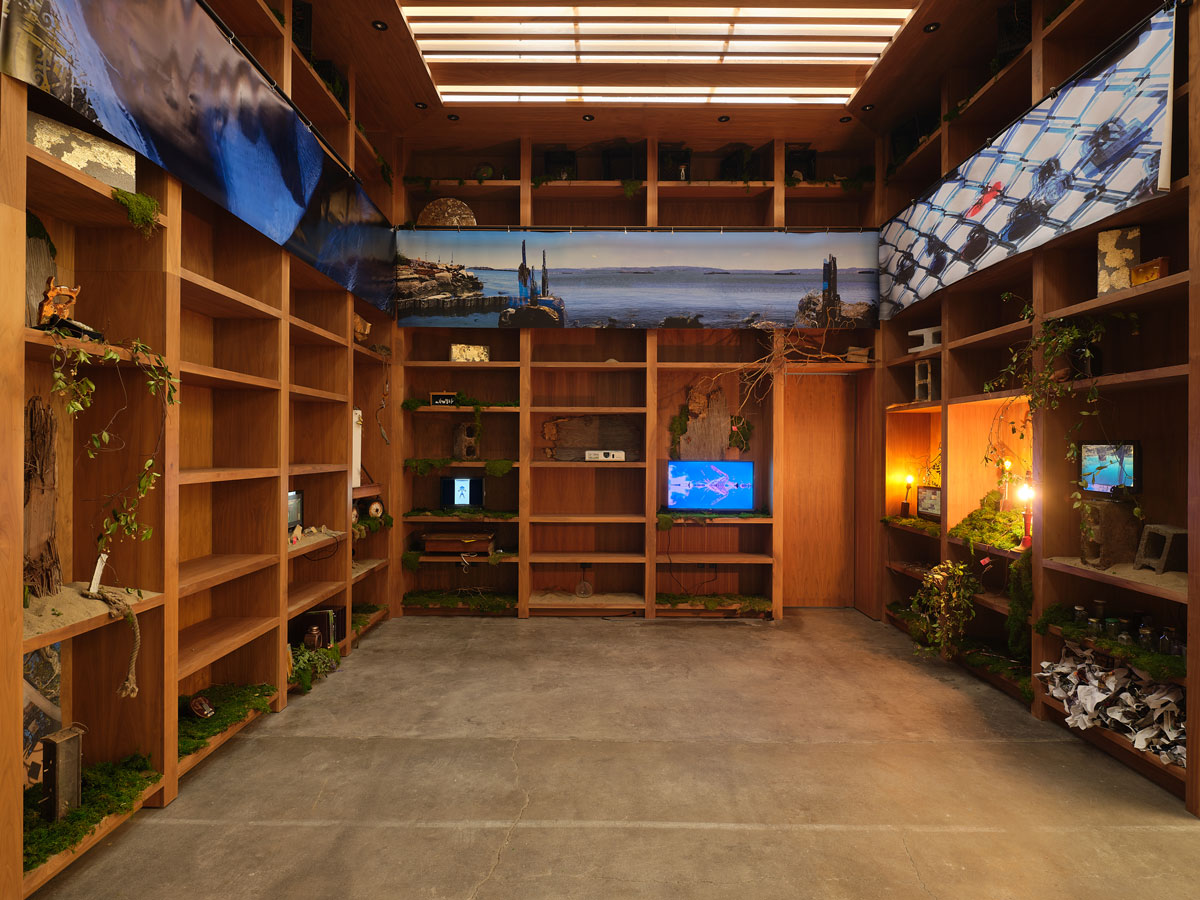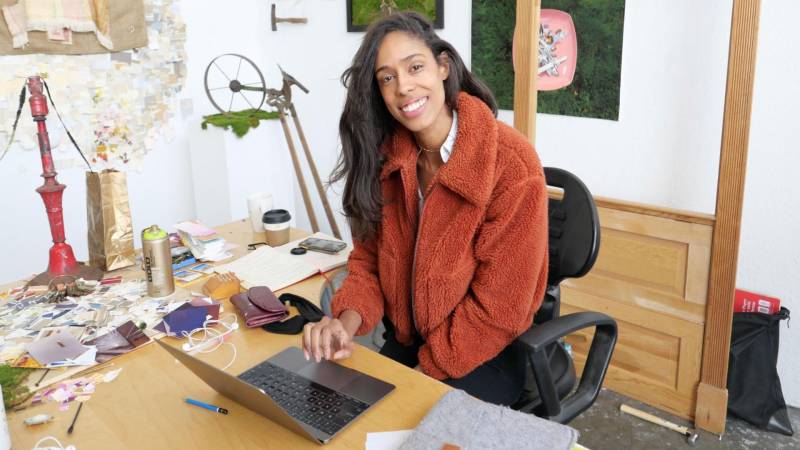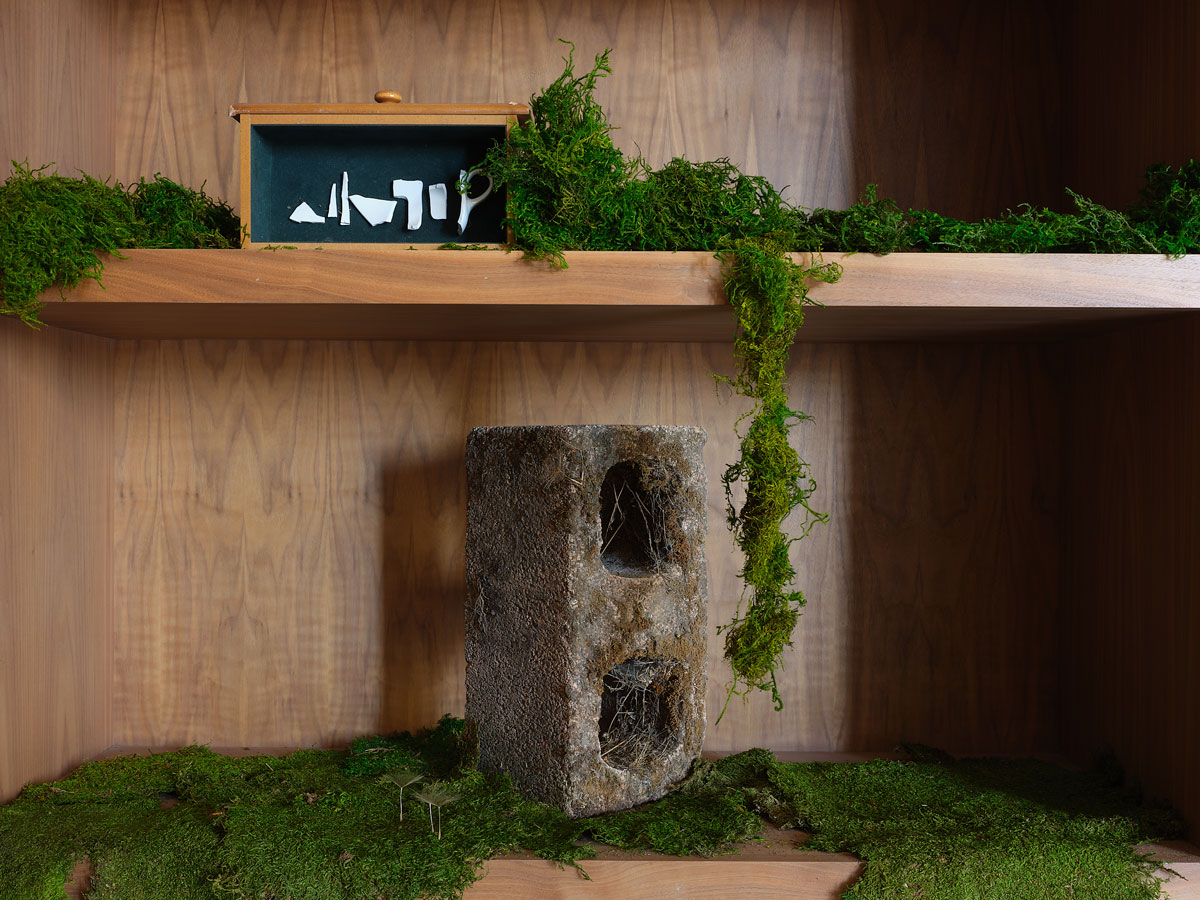Light filters down from above as an oceanic pulse engulfs a world of moss-covered wonders. This is the work of Hannah Waiters. Here, in a room somewhere at the geographic and temporal end of the world, there is a sense that the emerging Bay Area artist is bringing something newly dynamic to the San Francisco art scene.
It’s no surprise Waiters often incorporates natural elements into her work, given the expertise she developed working for several years in a geology lab. “I’ve always considered myself an artist though,” she points out. It was in 2020, after earning her MA in visual and critical studies and her MFA from California College of the Arts (CCA), that she says she “learned how to use art as a tool to survive.”
Her latest work, Reframing Double Consciousness: The Four Parts of the World, is a collaboration with artist Narges Poursadeqi, and it is here that the question of survival is most starkly illuminated. The immersive multimedia installation features over 60 distinct shelves of material assemblages as part of the ongoing / (slash gallery) exhibition Spirit & Flesh, curated by artist Sam Vernon to honor and celebrate the memory of fellow artist John Outerbridge, who passed away last year. What’s more, all of the objects in the piece were found in a tight radius around the gallery. The well-worn contents of the installation serve as a site-specific display of spiritual significance and public memory.

Reframing evokes the historical practice of curating a “curiosity cabinet,” meant to capture and display the marginalized creatures and wonders of the world from the comforts of home. In this imperial practice, European elite collected paintings and memorabilia which rendered unknown phenomena in Asia, the Americas, and Africa as mythical beasts, dividing philosophies and cultures.
Waiters and Poursadeqi turn the imperial gaze on its head. “We were experimentally modeling and abstracting this framework,” Waiters explains, “to reframe the outdated colonial concept of four racialized parts of the world through W.E.B. DuBois’ theory of double consciousness. Specifically, how we think about racialized time and space, and its reality to the Black body and in conditions of Blackness. To ask what that means. It’s thinking, how can we shift these ways that we perceive oneself?”





